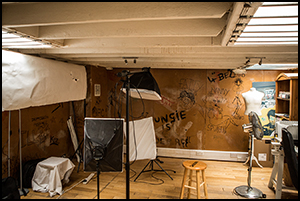Article contents
‘The most awkward building in England’? The ‘Rotten’ heritage of ‘Tin Pan Alley’ revisited
Published online by Cambridge University Press: 21 November 2016
Abstract

How should we identify, protect and preserve contemporary heritage? Five years ago, comparisons in an Antiquity paper between the ‘simulations of scenes’ drawn on the wall of 6 Denmark Street by John Lydon, during Sex Pistols rehearsals in the 1970s, and the Palaeolithic cave art of Lascaux provoked a strong response. Less contentious was the recent listing of the building, bringing its punk artworks under statutory protection. In this follow-up to their earlier article, the authors review the initial reaction from the media, the public and the artist himself, and consider how attitudes may have shifted. They also offer a novel, ‘punk’-informed approach to the management of cultural heritage.
- Type
- Research
- Information
- Copyright
- Copyright © Antiquity Publications Ltd, 2016
References
- 6
- Cited by


